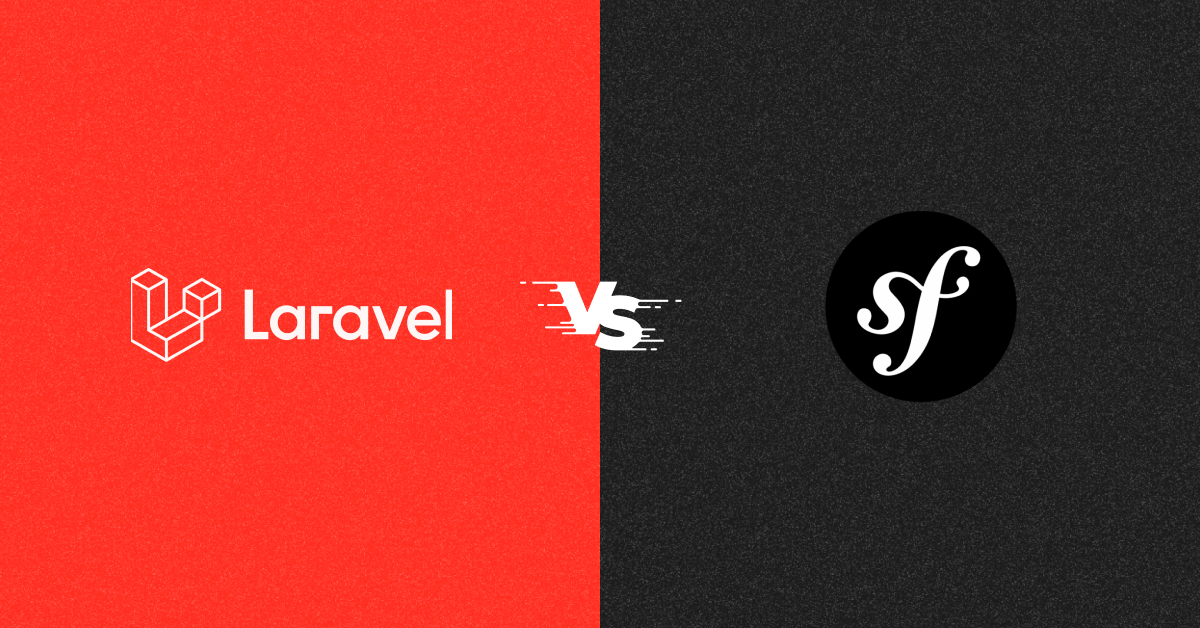Are you in the process of planning the development of a website for your startup or business? If so, you’ve made a wise decision! In today’s digital age, establishing an online presence is crucial for businesses seeking to connect with customers on a global scale. However, one of the most pivotal decisions you’ll need to make during the development process is choosing the right framework. Among the myriad options available, PHP frameworks, with Laravel and Symfony being two popular choices, stand out. This comprehensive article will provide you with a detailed comparison of these frameworks, shedding light on their distinctive features, advantages, and differences. By the time you finish reading, you’ll be well-equipped to make an informed decision on which framework aligns best with your website’s needs.
**Laravel: Empowering Smaller Projects with Speed and Efficiency**
Laravel, a highly acclaimed open-source PHP framework, is revered for its innovative and elegant syntax and steadfast support of the Model-View-Controller (MVC) architectural pattern. What sets Laravel apart is its remarkable agility and minimal configuration requirements, enabling swift development. Among its standout features are robust application security solutions, support for the MVC design pattern, integrated authentication and session management, enhanced unit testing capabilities, and the Blade templating engine.
**Symfony: Scaling to Excellence with Versatility**
On the other hand, Symfony is another PHP framework renowned for incorporating a versatile array of PHP components. Its primary mission is to accelerate web application development by eliminating redundant coding tasks. Symfony is hailed for its adaptability and reputation as a scalable platform that minimizes development time and reduces errors. Notable features include the Twig templating language, flexible URI routing, simplified development processes, efficient debugging tools, and a structured MVC architecture.
**Laravel vs. Symfony: Pros and Cons**
To better understand the distinctions between Laravel and Symfony, let’s delve into their respective strengths and weaknesses.
**Pros of Laravel**:
– **Advanced PHP Features**: Laravel excels in its ability to incorporate advanced PHP features seamlessly.
– **Third-Party Platform Compatibility**: It easily integrates with third-party platforms, making API integration straightforward.
– **Automated Testing**: Laravel provides robust support for automated testing models, enhancing code quality.
– **Rapid Development**: Developers appreciate Laravel’s efficiency, making it an excellent choice for swift project completion.
– **Easy-to-Learn Syntax**: The framework boasts an approachable syntax, easing the learning curve for new developers.
**Cons of Laravel**:
– **Slow Loading Time for Heavier Applications**: In the case of resource-intensive applications, Laravel may exhibit slower loading times.
– **Incompatibility with New Versions**: There can be occasional compatibility issues with new PHP versions.
– **Potential Database Congestion**: Excessive database queries can lead to backend data congestion.
– **Third-Party Library Challenges**: Utilizing third-party libraries may introduce unpredictability into the development process.
**Pros of Symfony**:
– **Custom Web Application Development**: Symfony shines when it comes to crafting custom web applications tailored to specific needs.
– **Endorsed by Leading Platforms**: It comes highly recommended by prominent platforms like Drupal and Magento.
– **Performance-Rich Features**: Symfony’s feature set makes it an attractive choice for substantial projects.
– **Database Efficiency**: It efficiently handles heavy databases.
– **Simplified Unit Testing**: Symfony simplifies the process of unit testing.
– **Easy Code Configuration**: It offers straightforward code configuration options.
**Cons of Symfony**:
– **Steep Learning Curve**: Mastering Symfony and keeping up with updates may require more time and effort.
– **Slower Development**: The development process with Symfony tends to be slower.
– **Testing Takes Time**: Testing can be more time-consuming compared to Laravel.
– **Performance Implications under High Traffic**: Extremely high traffic levels can impact Symfony’s performance.
**Case Study: Real-World Examples of Laravel and Symfony**
To provide you with a clearer picture of each framework’s suitability, let’s examine some real-world examples of websites using Laravel and Symfony.
**Websites Using Laravel**:
1. **Alison**: This is a free e-learning platform with millions of students worldwide.
2. **Invoice Ninja**: An open-source invoicing solution catering to freelancers and firms.
3. **Laravel.io**: A knowledge-sharing portal tailored for Laravel developers.
**Websites Using Symfony**:
1. **Spotify**: The renowned music streaming app, Spotify, relies on Symfony for its robust backend.
2. **Trivago**: The popular hotel booking platform, Trivago, leverages Symfony to handle its complex requirements.
3. **Vogue France/Netherlands**: These prestigious fashion and lifestyle magazines are powered by Symfony.
**In Conclusion: Selecting the Right Framework**
In summary, Symfony is often the preferred choice for websites handling substantial daily traffic loads, whereas Laravel excels in smaller-scale projects. However, the ultimate decision between Laravel and Symfony should be based on the specific requirements and goals of your project. Take into account factors such as project size, objectives, and the skillset of your development team to make the most suitable choice.
*Disclaimer: This article is a guest blog submitted by Milan Panchsara, an author at Rlogical Techsoft.*


